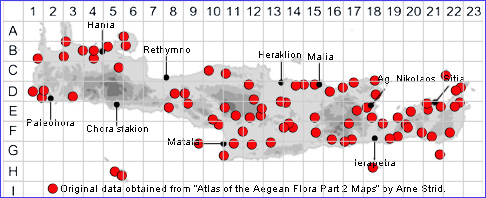SPECIES DESCRIPTION
CORONILLA SCORPIOIDES
Family and Genus:- See- LEGUMINOSAE
Common Names:- Annual scorpion vetch, sickle vetch.
Homotypic Synonyms:- Artrolobium scorpioides, Aviunculus scorpioides,
Ornithopodium scorpioides, Ornithopus scorpioides, Scorpius scorpioides.
Meaning:- Coronilla (L) Little-garland, (the flower-heads).
Scorpioides (L) Curved like a scorpion's tail.
General description:- Glabrous, somewhat glaucous annual, usually branched
from base.
Stems:-
1) 10-20 cm. slender, ascending.
Leaves:-
1) Sessile, mostly 3-foliolate with ± pair of small, suborbicular lateral leaflets and a
large, broadly ellipticoblong terminal leaflet. up to 40mm.
2) Stipules, leaf-opposed, small, connate.
Flowers:-
1) 2-5 in axillary, pedunculate umbels.
2) Calyx, c. 1.5 mm, teeth short or obsolete.
3) Corolla, 4-6 mm, yellow, petal sometimes veined with brown.
Fruit:-
1) Legume, linear, 2-4 cm long, usually much curved, prominently articulated.
Key features:-
1) Leaves, mostly 3-foliolate.
2) Corolla, 4-6 mm.
Habitat:- Olive groves, field margins, open dry shrubby vegetation , open coniferous
wood-land and road embankments. 0-1100 m.
Distribution:- Rather common throughout Greece. - Widespread in the
Mediterranean region ans eastwards to Iran. Widespread and common on Crete.
Flowering time:- Mid-Mar to June.
Photos by:- Steve Lenton

